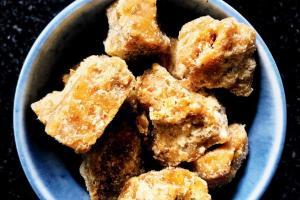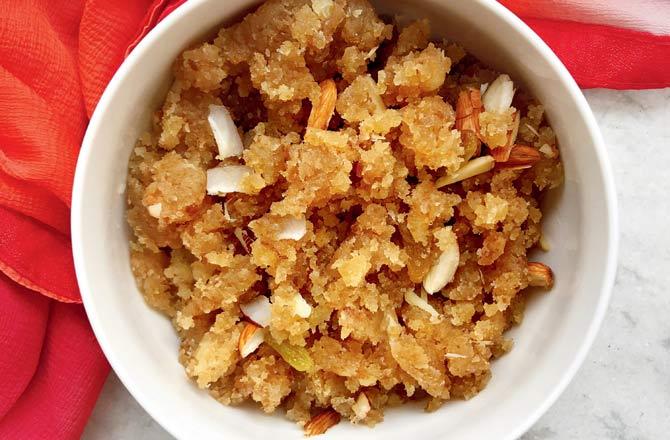Beyond the ghee-laden dhaba delights of Punjab are dishes that carry stories of families and history. A foodie travels into the khets of her hometown to discover and share forgotten meals

Food blogger Vernika Awal is a Punjabi, "displaced from Punjab". In the last 27 years, she has lived everywhere from Dehradun in Uttarakhand, to Assam and Mumbai. She recently moved to Delhi. This peripatetic upbringing meant that Awal could never really connect with her roots, or the foods that grew in her home soil. "While I am familiar with the Punjabi dishes made in our kitchen, I didn't know why we cooked what we did," she says.
The possibility of the legacy being lost on the generation after hers, prompted her to start the #DelectablePunjab hashtag on her Instagram handle @delectable_reveries, last year. The idea was to share the many influences of Punjab's rich food tradition, how the community's meals evolved post Partition, and to debunk the popular narrative of Punjab being the land of butter chicken and dhabe da mutton. "These dishes are not prepared in a majority of Punjab's homes. Sixty per cent of the state is vegetarian; they don't even eat eggs," says Awal. "I wanted to showcase our real cuisine."
ADVERTISEMENT
Over the last year, Awal has made several short trips to Punjab—her family hails from Adampur, a village close to Jalandhar—visiting home kitchens, taking down notes, and trying the recipes out for her blog and handle. She began with a winter series, that showcased foods cooked in the cold season, before trying out those prepared during baisakh or spring.
Awal also writes about the history behind ritual foods (meals cooked during certain celebrations), the use of mustard oil and ghee, and Partition meals. "It was a time when there was a general shortage of ingredients and vegetables. Punjabis started experimenting with the few resources available," she says. Awal hopes that the project will have Punjabis take pride in their cuisine. "We need to start looking homewards for inspiration. There is so much to learn."
Ajwain aur masale waala gur
Ajwain aur masale waala gur is a specialty. Loaded with carom seeds, almonds and peanuts, this is had with a tall glass of milk. It's a great remedy for cold and flu, making it medicinal in characteristic.

Bhajji
A combination of sweet and savoury nothings made in desi ghee, these are given to the groom's family by the bride's household during the vidaai. The logic behind giving this instead of perishable sweets is that this lasts longer when taking a journey. Bhajji used to be homemade, with a section of family members taking time out only to make this. Today, there are halwais who specialise in making it during the wedding season.

Sarso ka saag
The most common saag had in winters is sarso ka saag. We use mustard greens and stems, bathua, palak, methi and radish greens to make saag at home. The bitterness and pungency of mustard greens is well balanced by bathua and methi. This is a ready bowl of anti-oxidants. The usual ratio of palak, bathua and sarso is 1:1:2. Bathua and methi are added by andaaz. Also, saag is paired with makki di roti because of the inherent sweetness of the makkai.

Bread halwa
It is in the refugee camps after Partition that this dish found a foothold. Each family received only rationed groceries like bread, potatoes, onions and salt, and had to make the most of it even during auspicious occasions like Gurpurab, Diwali and new year. Not a community to be bogged down by suffering, the Punjabi families from both sides of the newly divided border learnt to make the most of these ingredients. Many were sure that the Partition was a temporary occurrence, and as a result, only carried a few utensils and ghee, to cook with. It is using that ghee, rationed bread, milk and sugar, that bread halwa was born.

Vernika Awal
Bread Halwa Recipe
Ingredients
1 cup ghee
½ pack of bread (brown or white)
1 cup coarse sugar
½ cup milk, to mash the bread
1 tsp cardamom powder
Almonds, to garnish
Method
Mash the bread with milk, and make a crumble out of it. In a hot kadhai, add ghee. When it is sizzling hot, add the bread mix. To this, add the coarse sugar and cardamom powder. Cook on a low flame till it all comes together, and the ghee begins to separate Garnish with almonds.
Catch up on all the latest Mumbai news, crime news, current affairs, and also a complete guide on Mumbai from food to things to do and events across the city here. Also download the new mid-day Android and iOS apps to get latest updates
 Subscribe today by clicking the link and stay updated with the latest news!" Click here!
Subscribe today by clicking the link and stay updated with the latest news!" Click here!







